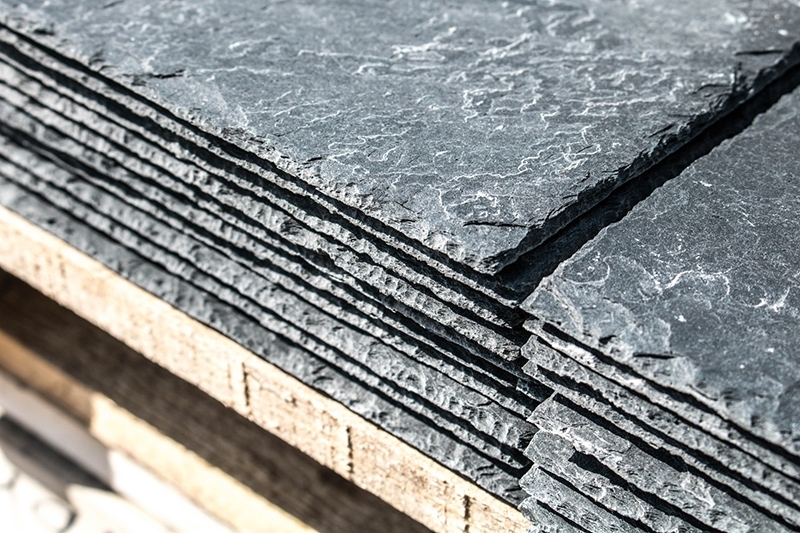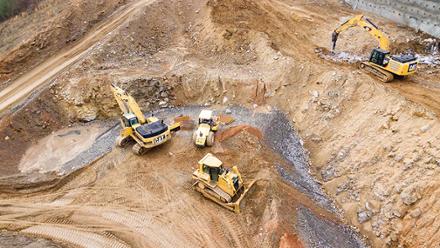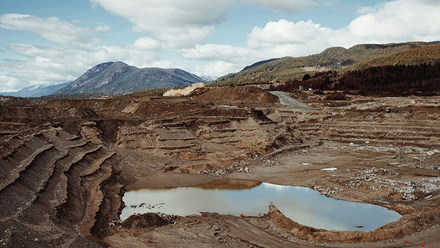Minerals and their uses
For economic purposes, the term mineral is used for any minerals or rocks that are extracted for use, we explain more.

The term minerals is used by geologists for specific chemical compounds that occur naturally in the Earth's crust and the term rock is applied to materials characterised by particular combinations of minerals. But for economic purposes the term mineral is used for any minerals or rocks that are extracted for use. This resource summarises the range of minerals that are used in all aspects of modern life. It considers economic sectors and provides brief notes on minerals worked in the United Kingdom. Further information can be found in Minerals Fact Sheets prepared by the British Geological Survey.
United Kingdom production of minerals from the land
The main minerals worked from the land in the United Kingdom are:
| Limestone, chalk and dolomite | Kaolin (china clay and ball clay) | Salt |
| Sand and gravel | Fireclay | Gypsum |
| Sandstone | Slate | Vein minerals (fluorite, calcite, barytes |
|
Igneous rock |
Coal | Metalliferous minerals (lead and iron ore) |
|
Silica (industrial) sand |
Oil and gas | Talc and serpentine |
|
Brick clay and shale |
Potash | Peat |
Minerals, notably oil and gas and sand and gravel are also worked from the sea but are not dealt with here.
Imports and exports
The UK exports significant quantities of a few minerals (crushed rock, oil and gas) but depends on importing a wide range of other minerals that are not found in economic quantities here. Some are imported in large quantities (oil, natural gas and coal). Others are diverse and imported in smaller amounts but are nevertheless essential in UK industries. These include -
|
Abrasives |
Gold | Pyrite |
| Aluminium compounds and bauxite | Graphite | Quartz and quartzite |
|
Antimony |
Hafnium | Radioactive and associated minerals |
|
Arsenic |
Insulating Materials | Rare earth elements |
|
Asbestos |
Iodine | Selenium |
|
Asphalt |
Iron compounds, ore and steel | Sepiolite |
|
Bentonite |
Lead | Silicon |
|
Beryllium |
Lithium | Sillimanite |
|
Bismuth |
Magnesia and magnesium | Silver |
|
Boron |
Manganese | Strontium |
|
Cadmium |
Mercury | Sulphur |
|
Chromium |
Mica | Talc |
|
Cobalt |
Molybdenum | Tantalum and niobium |
|
Coke |
Nickel | Tellurium |
|
Copper |
Perlite | Tin |
|
Diatomite |
Phosphorus | Tungsten |
|
Feldspar and nepheline syenite |
Platinum group metals | Vanadium |
|
Fuller’s Earth |
Precious and semi-precious stones | Zinc |
| Germanium | Pumice |
Construction minerals
Construction requires materials for buildings, infrastructure (e.g. roads, flood defences, dams etc. requiring fill and bulk poured concrete), foundations and levelling of sites. These include -
- Aggregates – sand, gravel and crushed rock (limestone, sandstone and igneous rock) used in concrete and concrete products such as roof tiles, paving slabs, prefabricated building components, asphalt for road surfacing and construction fill
- Cement – manufactured from limestone or chalk, with clay or shale and gypsum or anhydrite
- Bricks and roofing tiles – made mainly from clay
- Drainage pipes and floor and wall tiles – made from clay
- Sanitary fittings - from kaolin and ball clay
- Glass – mainly produced initially from silica sand but now often including recycled glass
- Metal formwork and concrete reinforcing bars – primarily imported steel or steel produced from imported ore
- Building stone, including limestone, sandstone and igneous rock, and roofing stone - mainly limestone - and slates
- Reconstituted stone made primarily from limestone
- Plaster and plasterboard – made from natural and synthetic gypsum
- Rockwool and other mineral-based materials for insulation
- Metals for wiring, plumbing an so on
- Plastics from oil-based materials for pipes, wiring and building fittings and
- Armourstone consisting of large blocks of rock, mainly limestone and igneous rocks, placed on beaches to absorb and deflect wave energy as part of coastal defences.
While there are increasing calls to use more renewable materials in construction it is important to remember that minerals will still be needed for foundations, and site protection works as well as major civil engineering projects such as roads and railways and paving and road surfacing.
Construction minerals are used also as armourstone to break wave energy as a part of coastal defences to fight erosion and flooding
Industrial, agricultural and horticultural minerals
A great variety of minerals, some of which are produced in quantity in the UK while many others are imported, are needed for a wide range of industrial, agricultural and horticultural purposes and support most aspects of modern life.
These range from manufactured goods made from minerals including those based on metals, plastics, glass and ceramics whether in the home, on the road, in the workplace, in the information technology equipment on which we increasingly depend, and many other uses range from fillers in paper and plastics, to reagents and carriers for chemicals in medicines, cleaning materials, pesticides, insecticides and explosives and pigments.
Manufacturing
Minerals are used in a wide range of processes, such as -
- clay, limestone, chalk and barytes used as fillers and extenders in paper, paint, pharmaceuticals and toothpaste
- limestone used in fluxes
- mineral pigments:
- metals, glass and plastics for components of industrial equipment and household appliances
- components of electronic, communications and information technology equipment
- high-tech ceramic applications in the medical, security, defence, automotive and aerospace industries
- furnace linings and other refractories from dolomite and other minerals and
- silica sand for foundry mouldings.
Water supply and food
Use of minerals includes -
- filtering of water through sand and diatomite, a fine grained material consisting of small silica particles from within certain microscopic plants
- supply and drainage pipes made from clay
- special types of clays used to purify drinks
- fuller’s earth used in refining vegetable oils and fats
- limestone for refining of sugar beet
- food additives including calcium carbonate from chalk and limestone, fullers’ earth, gypsum and salt for both human and livestock use
- packaging consisting of glass - from silica sand, plastics - partly from oil, gas and coal, and cans -metals from ore deposits
- utensils made from ceramics from certain clays, metals, glass, and
- table and ornamental ware - made from clays.
Chemical industry feedstock
Including coal, salt, oil, potash, limestone, chalk and dolomite, and a variety of ore minerals such as barytes and fluorspar.
Pharmaceutical and medical
Uses include -
- limestone as an acidity regulator
- gypsum for surgical and dental purposes and plaster
- kaolin and fuller’s earth used as fillers and fuller’s earth as a carrier of chemicals, and
- fluorides from fluorspar as an additive in toothpastes.
Agricultural, horticulture and gardening
Some minerals are used to improve the quality of soils. These include -
- limestone, chalk, dolomite which are spread to neutralise acidic soils and, in the case of dolomite, to add magnesium,
- silica sand to improve soil texture and drainage,
- fertilisers, fungicides and pesticides manufactured from petrochemicals,
- fuller’s earth used as a carrier for herbicides and pesticides,
- fluorspar used in manufacturing herbicides and pesticides
- potash as a source of potassium and phosphates as a source of phosphorus, primary plant nutrients, and
- peat used in horticulture and gardening usually mixed with compost and sand, although use of peat is declining and may cease soon.
Energy Minerals
Energy generation and transmission requires minerals such as -
- oil, natural gas, coal and also uranium (wholly imported) as energy sources
- limestone used for flue-gas cleaning in coal fired power stations and
- steel for pylons, wind turbines, boilers, generating sets and turbines, clays for porcelain insulators and copper for wiring
- concrete for built structures such as power stations, reactor containment vessels, switchyards, and foundations for pylons and wind turbines
- silicon and silver for solar panels.
Sufficient and reliable supplies of energy and fuel are essential in a society that depends increasingly on high technology. Much of the supply comes currently from energy minerals from the continental shelf, as well as the mainland of the UK and substantial quantities of imports.
While renewable sources of energy can reduce the amounts of fossil fuels that are used but all, whether wind, solar or water powered, require minerals for construction and equipment.
Distribution of energy also requires metals, ceramics and construction materials for foundations and, of course, fuel for vehicles.
Heritage and arts sectors
Suitable minerals are required for -
- repairing and maintaining historic buildings and structures, including building stone, roofing slate, stone, lime and mortars and
- production of sculptural and art works and funerary monuments for example, limestone, the variety of gypsum called alabaster, slate, granite and serpentine and
- decorative pigments, often either mineral or oil based.
Many historic and protected buildings were constructed from dimension stone. These need to be maintained and repaired which requires stone with the right physical and chemical properties and appearance. That often can come only from the original quarry or a site close to it.
Also maintenance of dry stone walling depends on local supplies. Stone is not the only key material. Brick, tiles and decorative features made from clay are also needed.
Renewability and recycling
Minerals are mainly non-renewable resources that should be used carefully and many can be profitably recycled. In some cases recycled or alternative materials can be used in place of newly extracted minerals, examples are in construction, demolition and excavation wastes and furnace ash used as aggregates, recycled glass, organic fibres substituting for peat, scrap and recovered metals, synthetic gypsum for plaster, but new extraction is still needed to meet a significant part of total demand for many of these.
Reuse and recycling of materials is increasingly important as part of sustainable development. About 28% of total aggregates supply in England now comes from recycling of masonry and other mineral products reducing the amount of materials that are required from new extraction:
Recycling of glass has taken place for many years. Increasingly synthetic gypsum, produced by desulphurisation of flue gases at power stations is being used in place of mined gypsum but that process relies on supplies of calcium carbonate from limestone and chalk.








